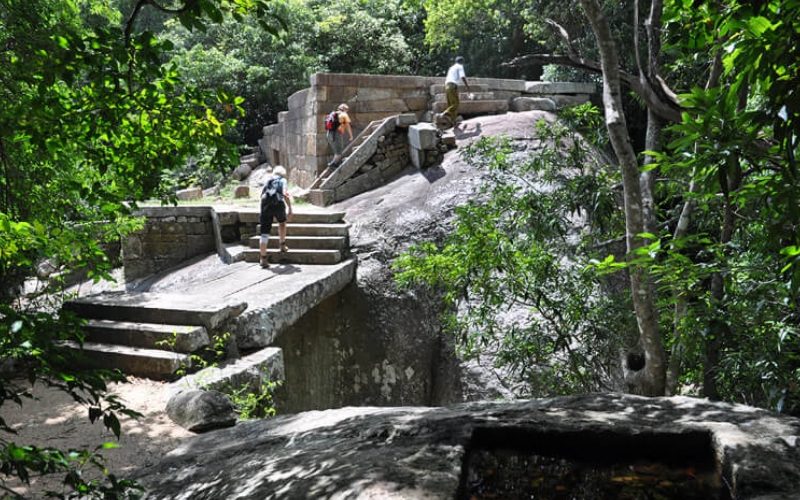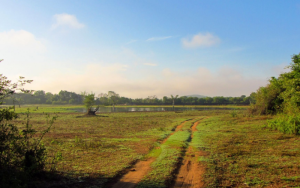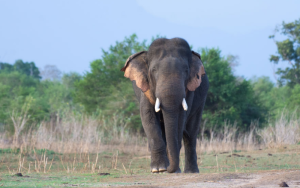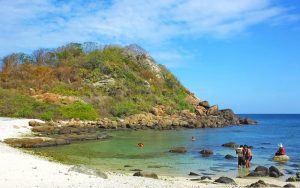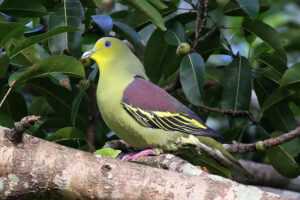History Of Ritigala
It is possible to determine that Ritigala is an ancient name based on its historical significance. Think about the meaning of the word Ritigala. It was developed from the word “Aritta,” which means “Aritta” in Hindi.
“Security” is the literal meaning of this word, which was first mentioned in the ancient Pali language. The word gala is derived from the Latin word for “rock.” The term “Safety Rock” can be used to describe the structure as a whole in English. Located in the North Central Province, Ritigala is sandwiched between the ancient cities of Anuradhapura and Polonnaruwa. The distance between Anuradhapura and Polonnaruwa is 43 kilometers, and the distance between Polonnaruwa and Ritigala is 49 kilometers. Visitors can gain access to the Ritigala, which is located in the middle of the Habarana-Maradankadawala route.
The settlement of Ganewalpola can also be reached by this route. Visitors to Ritigala, on the other hand, will find Habarana to be the most convenient transportation hub. The distance between Habarana and this road is 12 kilometers. The Ritigala mountain contains 70 rock caverns, all of which have been discovered. As previously indicated, the Ritigala was known by the name of AittaPabbatha, and he served as minister to King Dewanampiyathissa during his reign in Mahawansa.
He was the first monk, and he went on to become Arahath, who spent the rest of his monastic life in Ritigala. The most significant fact is that Ritigala has served as a king’s refuge on numerous occasions. As an example, consider the 7th-century fight against the Dravidian merchants who came to the island. In the same century, there was also king Dutugemunu and Jetta Tissa.
Located in the North Central Province, Ritigala is sandwiched between the ancient cities of Anuradhapura and Polonnaruwa. The mountain contains 70 rock caverns, all of which have been discovered. It has served as a king’s refuge numerous times, including during the 7th-century fight against Dravidian merchants.

Rock Inspection
According to the rock inscription, early Sri Lankan Buddhist monks were known to have lived in natural caves or rock shelters of this type. As a result, the caverns that can be seen in Ritigala are the remains of a Monastery where the Pansukulikas Monks had resided.
We are unable to see any temples, image houses, or stupas in Ritigala as a result of this issue. After a short trek up the mountain, you will be able to glimpse the ruins of Ritigala. According to an inscription uncovered, King Lanji Tissa was the one who discovered Ritigala Monastery.

Location Briefing
When other attractions in the North Central Plains are taken into consideration, such as Sigiriya, Dambulla, and Mihintale, Ritigala can be designated as the highest mountain range in Sri Lanka’s North Central dry plain, and hence the highest mountain range in the country.
The Ritigala mountain range is comprised of four peaks. This peak rises to a height of 766 meters above the mean sea level. The mountain range measured three miles in length and two miles in width. Ritigala’s highest summit, Ritigala Peak, was hidden by deep vegetation.

Wildlife & Biodiversity at Ritigala
The majority of wild Elephants, Leopards, and Bears may be found in this deep jungle habitat. During the North East Monsoon, the region of Ritigala receives the most rainfall. This jungle serves as the watershed for the Malwathuoya River.
It is possible to witness a greater variety of flora and a greater range of biodiversity than is often found in the central hills of the wet zone. Some of this flora is endangered or endemic, while some of it is unusual. In addition, wild orchids can be found in abundance in the mountain’s upper reaches. It is home to a greater variety of unusual flora and fauna.
Known as a biodiversity hotspot in the dry season, Ritigala is managed by the Department of Wild Life of Sri Lanka and the Forest Department of Sri Lanka in collaboration with them. We can recognize endemic bird species such as the Black Eagle, Grey Hornbills, Sri Lanka Spur Fowl, Malabar Pied Hornbill, and Spot Winged Thrush, as well as a variety of other species. The Ritigala mountain range is comprised of three distinct types of forest.
Dry Mixes of Evergreen Forest, which can be found in the lower part of the mountain ranges, Tropical Mountain Forest Type, which can be found in the middle of the mountain ranges, and Upper Mountain Forest Type, which can be found in the highest terrain are the types of forest that can be found in the mountains.
Ritigala is the highest mountain range in Sri Lanka’s North Central dry plain. It is comprised of four peaks and measures three miles in length and two miles in width. The majority of wild Elephants, Leopards, and Bears may be found in this jungle habitat. During the North East Monsoon, the region of Ritigala receives the most rainfall. This jungle serves as the watershed for the Malwathuoya River. It is home to a greater variety of unusual flora and fauna in the dry season than in the wet season.
Summary of Ritigala
- The History of Ritigala: The ruins of Ritigala date back to the ancient kingdom of Anuradhapura, which was established in the 4th century BCE. The site was originally a Buddhist monastery, and its isolation and natural beauty made it an ideal location for meditation and contemplation. The ruins include remains of a hospital, a library, a pond complex, and an extensive network of paths and stairways that lead to the mountain’s summit.
- The Unique Features of Ritigala: What sets Ritigala apart from other ancient ruins in Sri Lanka is its unique topography and natural surroundings. The mountain range is covered with dense forests and is home to a variety of flora and fauna, including endemic species. The ruins themselves are nestled among giant boulders, creating a mysterious and enigmatic atmosphere. The architecture and design of the ruins also showcase a blend of Buddhist and pre-Buddhist elements, making it a unique and fascinating site to explore.
- The Cultural Significance of Ritigala: Ritigala is not only a site of historical and architectural significance but also has cultural and religious importance for the people of Sri Lanka. The site is considered sacred by Buddhists, and it is believed that the famous Buddhist monk, Arahath Mahinda, visited the site and established a monastery there. The ruins are also a popular pilgrimage site for Buddhists and attract a large number of visitors during religious festivals.
- Visiting Ritigala: If you are planning to visit Sri Lanka, a trip to Ritigala is a must for history and nature enthusiasts. The site is easily accessible by road from the nearby town of Habarana, which is located about 40 kilometers away. You can also take a guided tour of the ruins to learn about their history and significance. It is advisable to wear comfortable walking shoes and carry water and sunscreen, as the climb to the summit can be challenging, especially during the hot and humid months
- How to Reach Ritigala: Ritigala is located in the North Central Province of Sri Lanka, and the nearest town is Habarana, which is about 40 kilometers away. Here are some of the ways you can reach Ritigala:
- By Car or Tuk-Tuk: The easiest way to reach Ritigala is by hiring a car or tuk-tuk from Habarana. The journey takes around 30-40 minutes, and the road is well-maintained. You can negotiate the fare with the driver beforehand.
- By Bus: If you are on a budget, you can also take a bus from Habarana to the nearest village, Maradankadawala, and then take a tuk-tuk from there to Ritigala. The bus journey takes around 45-60 minutes, and the tuk-tuk ride takes around 20-30 minutes.
- By Foot: For the adventurous and fitness enthusiasts, you can also reach Ritigala on foot by taking the scenic trail from Habarana to the mountain. The hike takes around 4-5 hours, and you’ll get to enjoy stunning views of the countryside and forests along the way.
Conclusion
Ritigala is a unique and fascinating site that showcases the rich cultural heritage and natural beauty of Sri Lanka. Its ancient ruins, lush forests, and stunning topography make it a must-visit destination for travelers who seek adventure and exploration. Whether you are a history buff, a nature lover, or a spiritual seeker, Ritigala has something to offer everyone.

